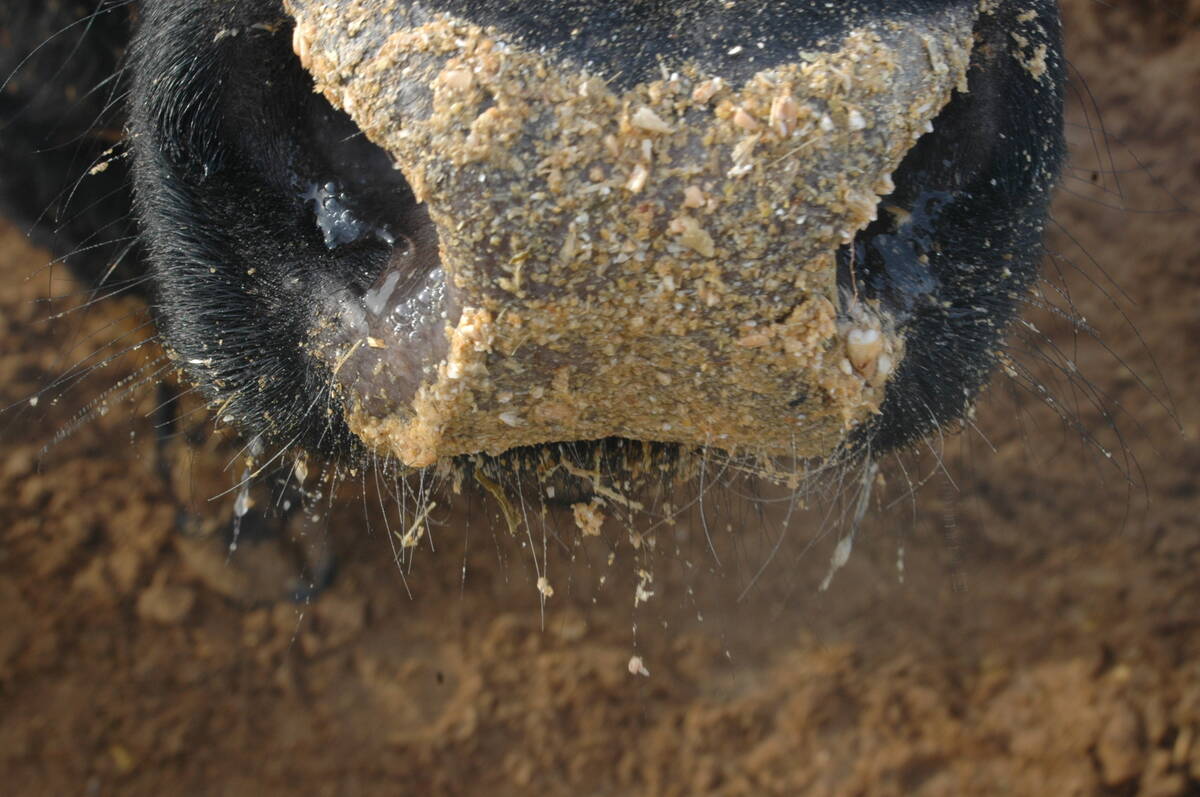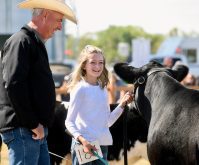Fed cattle
Fed cattle prices in Canada reached new highs during the second week of March. Urged higher by tightening supplies, smaller beef production, solid demand and stronger cutout values, the average fed steer price reached $203.90/cwt in Alberta. An average of $203.90/cwt is an improvement of nearly 10 per cent or $17.86/cwt since the start of the year and 26 per cent or $42.18/cwt higher than the same week in 2022. Technical markets are strong as well, as deferred live cattle futures continue to improve to keep up with the momentum in the cash market. In Alberta, the cash- to-cash fed cattle basis remains wide at -$23.62/cwt. Last year the same week saw the basis at -$14.59/cwt.
The Alberta and Saskatchewan cattle-on-feed report shows on-feed numbers on March 1 at 1,049,686 head, down six per cent compared to March 1, 2022. The number of feeder cattle placed onto finishing rations in February was down eight per cent to 128,590 head. The monthly on-feed report stated fed cattle marketings from finishing lots were 11 per cent smaller than in February 2022 at 128,590 head.
Read Also

Feed grain update for Canadian beef producers
Factors affecting the feed grain market and what it means for Canadian cattle feeders
While February marketings slowed, the number of fed steers slaughtered in Canada to date through the first week of March 2023 total 305,995 head, which is eight per cent larger than the same weeks in 2022. Heifer slaughter is 18 per cent smaller at 157,362 head.
Exports of fed cattle including cows to February 25 are 77,111 head, which is five per cent smaller than the same weeks last year. Although still larger than a year ago, the fed steer carcass weight has dropped in recent weeks to an average of 927 lbs. which is three lbs. heavier than a year ago but 12 lbs. lighter than the 2023 year-to-date average.
Deb’s outlook for fed cattle: The Canadian fed cattle market should be well supported in the near term. Fundamentally, over the next several weeks beef production should decrease as slaughter numbers tighten and calves enter the slaughter mix which will decrease carcass weights. In addition, domestic and boxed beef exports are expected to be strong this spring. Expect fed cattle prices to strengthen at a slow and steady pace as we look to set new spring highs.
Feeder cattle
Statistics Canada reported further decreases in almost all categories of the January 1 cattle inventory report. This continuation of herd reduction leads to a smaller feeder supply and increased competition for available stock. In recent weeks, the number of feeder cattle available at auction has jumped as much as 40 per cent week-over-week. However, the start of the year saw much smaller volumes compared with last year. This additional volume was met with competitive buyers which led to an increase in some classes by as much at $8 to $10/cwt since the start of March.
Optimism for a strong summer yearling run has created good momentum in the calf market in Canada. The average price of 550-lb. feeder steers the second week of March was $323.64/cwt, which is a 40 per cent increase when compared to a year ago and a $22.50/cwt improvement over the past six weeks.
Heavier feeders haven’t jumped as high as the lightweight feeders, but they have seen continuous improvement through 2023. The 850-lb. feeder steer average the second week of March was $250.56/cwt, an improvement of $8.29/cwt over the past six weeks and 33 per cent since the start of the year.
Even with the higher feeder prices, the basis has widened. At -$16.34/cwt on March 10, the basis is $10.95/cwt wider than a year ago and $11.61/cwt wider than the five-year average. Even with a wide feeder basis, the feeder cattle exports to date in 2023 are 61 per cent smaller than the same time in 2023.
Deb’s outlook for feeder cattle: Feeder prices on all classes should climb in the near term fueled by anticipated tight feeder cattle supplies, strong grass cattle demand and improved fed cattle prices. Lower barley prices will ease cost of gain which will also be supportive. As the snow melts, the demand for grass cattle will be strong, pushing calf prices along as buyers compete for a smaller supply in 2023.
Non-fed cattle
Both non-fed cows and bulls saw a significant jump in early March. Tightening supply and increased spring demand were met with eager buyers.
Cow slaughter for year-to-date is 14 per cent larger than a year ago although slaughter numbers have eased and cow numbers at auction have dropped. The D1,2 cow price averaged $126.30/cwt in the second week in March, an improvement of $32.55/cwt from the start of the year and up 54 per cent from the fourth-quarter low. When compared to a year ago, the average is $31.61/cwt higher.
Butcher bull prices also jumped, hitting $139.78/cwt. This is up from $124.88/cwt at the start of 2023 and $23.78/cwt higher than the same week in 2022. Bull slaughter in Canada to date totals 2,000 head, which is 26 per cent higher than a year ago. Exports are also larger, up six per cent at 3,747 head.
Debs outlook for non-fed cattle: Non-fed slaughter numbers will be smaller in the coming weeks as calving will be in full swing. Spring demand will be strong for ground beef as weather warms and barbecues fire up. Prices moving into the second quarter should maintain momentum. Fundamentally, cow numbers in North America have decreased, leaving supplies tight moving further out in 2023 and beyond. The non-fed market will be supported by this. Even in times of economic uncertainty non-fed beef will remain in demand as a lower-cost protein option. Cow and bull prices will follow some seasonal trends but will remain well supported.
















